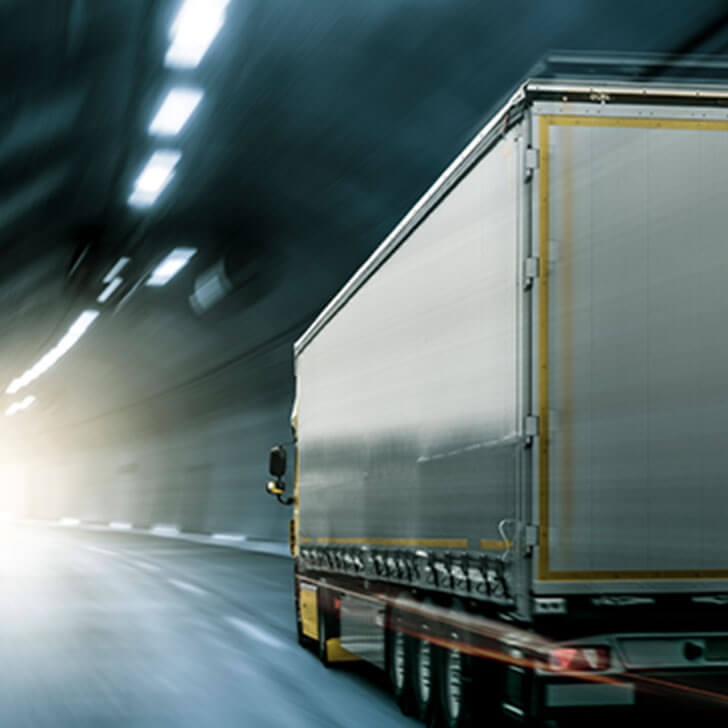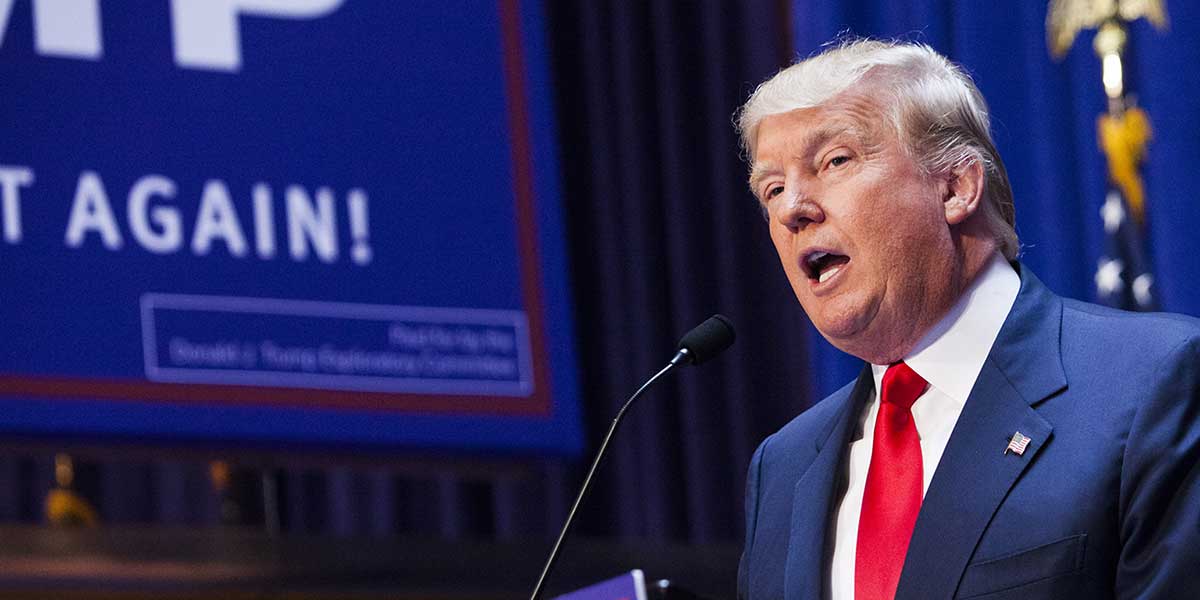Unleash America’s Economy
A 21st century national highway freight network will deliver new jobs and broad economic growth.
A Bold Blueprint: Tomorrow's Economic Expressway
American greatness is never written in the past tense. President Lincoln saw the nation's transcontinental railroad as a bold bid to unite a divided republic, while Eisenhower's Interstate Highway System paved the way for expanded opportunities for all Americans and decades of economic growth.

Today, America is at another crossroads. Our major highway network is woefully underperforming. It is outdated, overused, underfunded and in desperate need of modernization. We are once again called not simply to rebuild what once was, but to envision and create the highway network of tomorrow.
America's Economic Expressway is that future network: a high-tech corridor of commerce that unleashes a new age of economic prosperity.
On the Economic Expressway, every community – from Rust Belt cities to the farming towns of the American heartland – will be open for business once more. Boosted productivity, reduced shipping costs and expanded global reach will facilitate increased exports and lower business costs. America will regain its competitive edge, and in malls and markets around the world, more goods and produce will be proudly stamped "Made in the USA."
America already has the tools to build this vibrant future.
- Existing rights of way allow our country to erect new skyways above, and burrow new tunnels below, the highways we traverse today.
- Wireless communication allows us to solve a traffic jam before it starts.
- Heated roadways allow us to melt the snow that brings traffic to a standstill during unforgiving winter storms.
We have the know-how. It's up to our leaders to answer the call. Join us in building America's Economic Expressway and boldly writing the nation's next great chapter.
Why Now?
Years of chronic underinvestment and an overused highway system carrying far more passenger and freight traffic than originally intended are taking an ever-increasing toll. The result is staggering lost productivity and wasted hours that cost businesses, workers and the U.S. economy billions of dollars annually.
Traffic
- In one year, trucks spend more than 728 million hours in traffic according to research by the American Transportation Research Institute. That is, they find, a sap of time and fuel equal to 264,781 trucks sitting idly for an entire working year.
- These delays have been estimated to cost businesses $45 billion in a single year, according to estimates by the data firm INRIX and the Centre for Economics and Business Research.
To compound the problem, over the next 30 years, the U.S. population is expected to increase by 70 million people and commercial truck shipments are expected to increase 44 percent. Our highway network must be ready to handle the flow of many more people, finished goods and raw commodities. Getting ahead of this surge of people and products now will improve Americans' quality of life while creating the foundation for economic growth.
businesses $45 billion in a single year.
As America approaches her 250th birthday, it's time to renew her promise of a more prosperous future by boldly embracing an infrastructure network that carries the cargo and commerce of the 21st century. It's time to build the Economic Expressway.
How Transportation Investments Yield Dividends
10 Features of the Economic Expressway
What will the Economic Expressway look like? Here are just 10 of its most defining features:
-

1. Skyways take trucks high …
Air rights and existing rights of way enable America's Economic Expressway to build up, not out. Elevated roadways move freight swiftly, while commuters and families travel safely on the road below.
-

2. …While tunnels take trucks low.
Where building up isn't possible, the Economic Expressway moves trucks and freight underground. Tunnels connect ports with interstates and ease congestion on crowded city roads. With tunneling technology reaching new levels of efficiency, it is truly the golden age to build underground.
-

3. A smart and modern communication network connects all aspects of road travel.
On the Economic Expressway, roads are made of much more than aggregate, asphalt or concrete. They are digitally enabled and embedded with the latest Silicon Valley technologies to keep commerce moving swiftly and smoothly. Real-time monitoring informs digital road signs that lower speed limits, suggest detours and prevent traffic jams. Roadside detectors monitor emissions, and big data gathered on the Economic Expressway informs long-term transportation plans.

"Crumbling infrastructure will be replaced with new roads, bridges, tunnels, airports and railways gleaming across our beautiful land..."
President Donald Trump's First Address to Congress
Unleashing America’s Economic Might
While U.S. economic growth annually exceeded 3 percent in the years following the Second World War, today growth has significantly slowed. In 2013, White House officials declared that real GDP growth would "likely be permanently slower than it was in earlier eras," and an article published by the Federal Highway Administration estimates that a long-term slowdown in economic growth has cost as much as $13 trillion in national income, contributing to the federal deficit we face today.
The impact of our overused and underfunded transportation network on productivity is evident to anyone who has endured a traffic jam. Glance out the window of your car and chances are high that you'll see trucks going nowhere fast. They carry 70 percent of manufactured goods, refined petroleum products, chemicals and raw materials originating in the U.S. Yet in 2014, trucks spent more than 728 million hours in traffic – equal to 264,781 trucks sitting idly for an entire working year. Four years ago, the data firm INRIX and the Centre for Economics and Business Research estimated that these delays cost businesses $45 billion in just one year.
The Economic Expressway is a targeted, cost-effective nationwide initiative to put this money back in the pockets of businesses, workers and consumers. According to the American Transportation Research Institute, addressing congestion would have saved the trucking industry $49.6 billion in operational costs in 2014. Meanwhile, innovations such as dedicated truck lanes that safely accommodate larger autonomous freight shipments will take trucks off the road and save millions of gallons in fuel, which will help to reduce the cost of doing business even further.
In an age when CEOs can choose to do business in Dallas or Dubai, a dedicated and modern infrastructure matters. Improved roadways will encourage businesses to keep production in the United States because they will be able to ship their products more reliably and efficiently. This advantage is critical in a global economy.
Just as important, the U.S. is expected to gain 70 million more people and nearly double the number of commercial truck shipments over the next 30 years. The Economic Expressway will prepare this country for the next great chapter in American history.
Q&A: Dollars and Sense
What is the Economic Expressway?
It’s the Interstate System and its connectors to our major ports, inland waterways, rail hubs, airports and pipelines. It literally moves the U.S. economy.
How does the Economic Expressway differ from our Interstate Highway System?
It’s a modernized, higher performance Interstate System able to handle the challenging freight movement and mobility needs of this century, not the last.
What’s the cost to the economy if we don't modernize our transportation system?
Adding the 22% population and 44% trucking increases expected by 2047 to a network now filled with traffic chokepoints is a recipe for a low performing economy.
What types of jobs will the Economic Expressway create?
A high-performance shipping network will create jobs across the board by reducing costs and making U.S. businesses more competitive. Growing businesses hire.
How will the Economic Expressway help rural and Rust Belt communities?
A high-performance shipping network is key to attracting manufacturers to the U.S. And the network's footprint can be used to bring broadband to rural America.
What will the Economic Expressway mean for everyday Americans?
First, done right, a growing economy that benefits everyone by creating and sustaining jobs. Second, safer and less congested highways.



